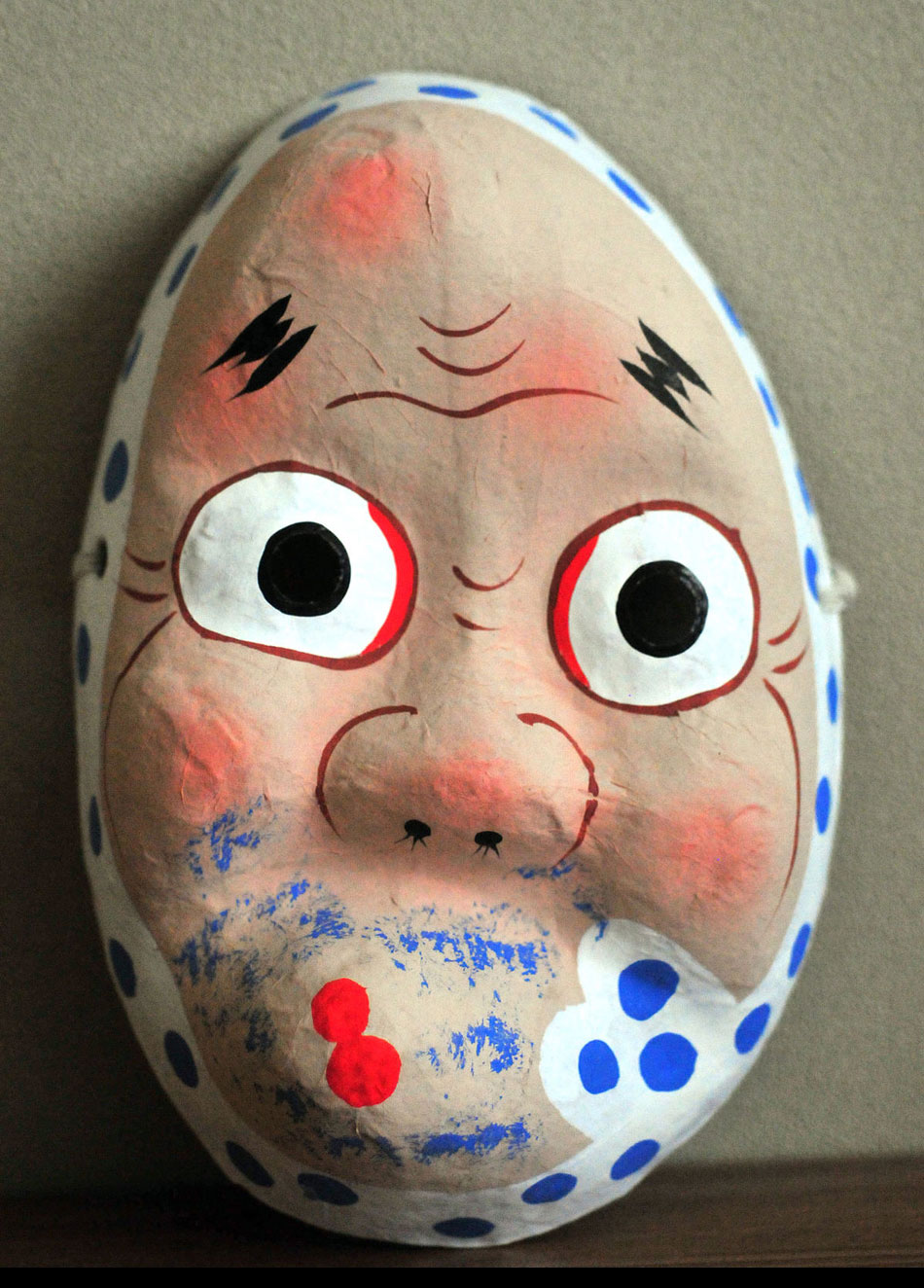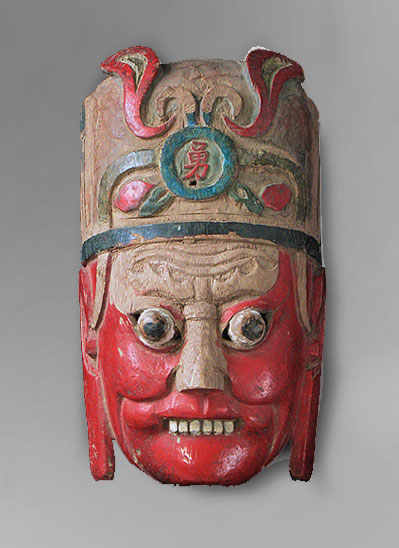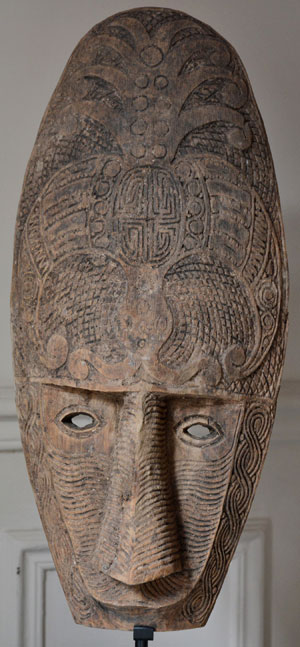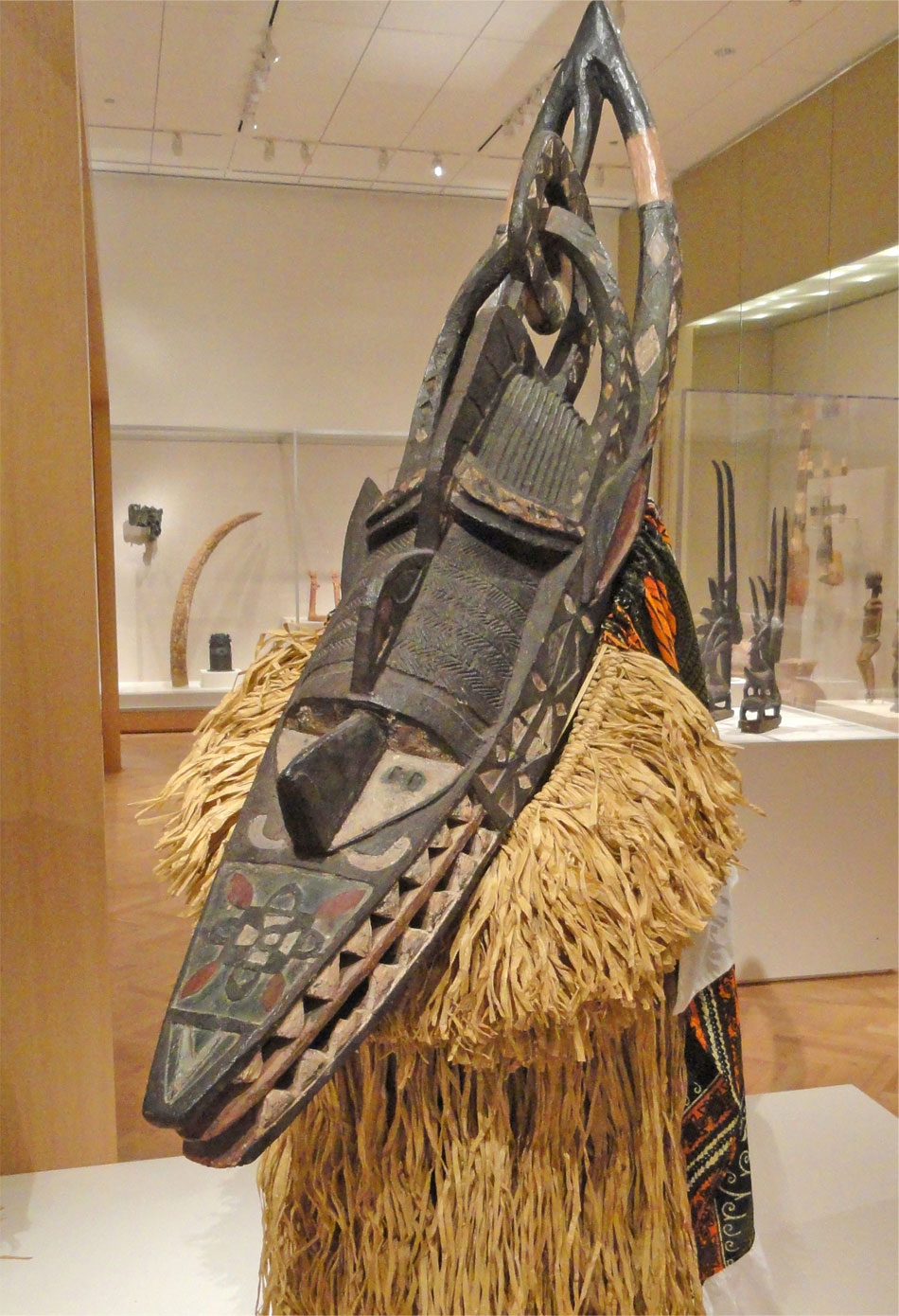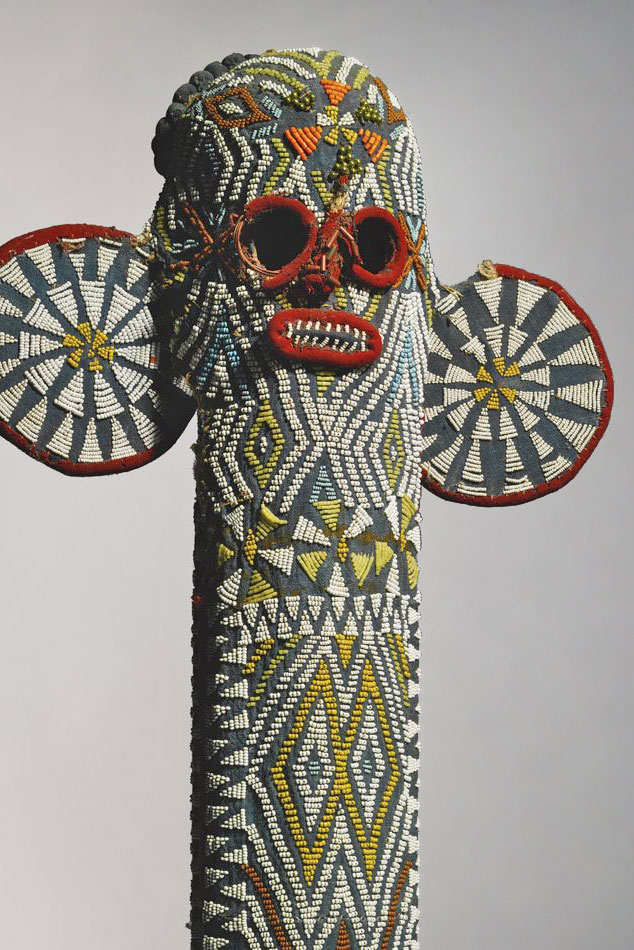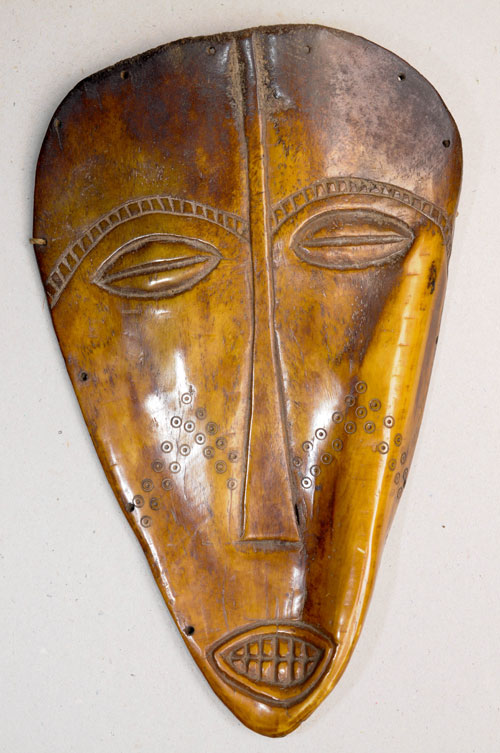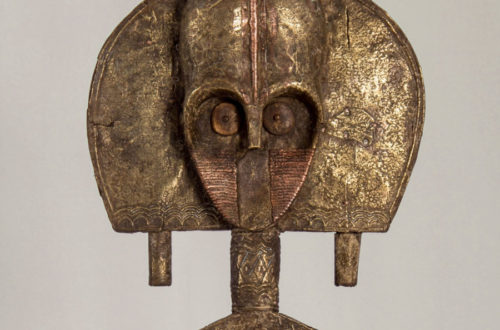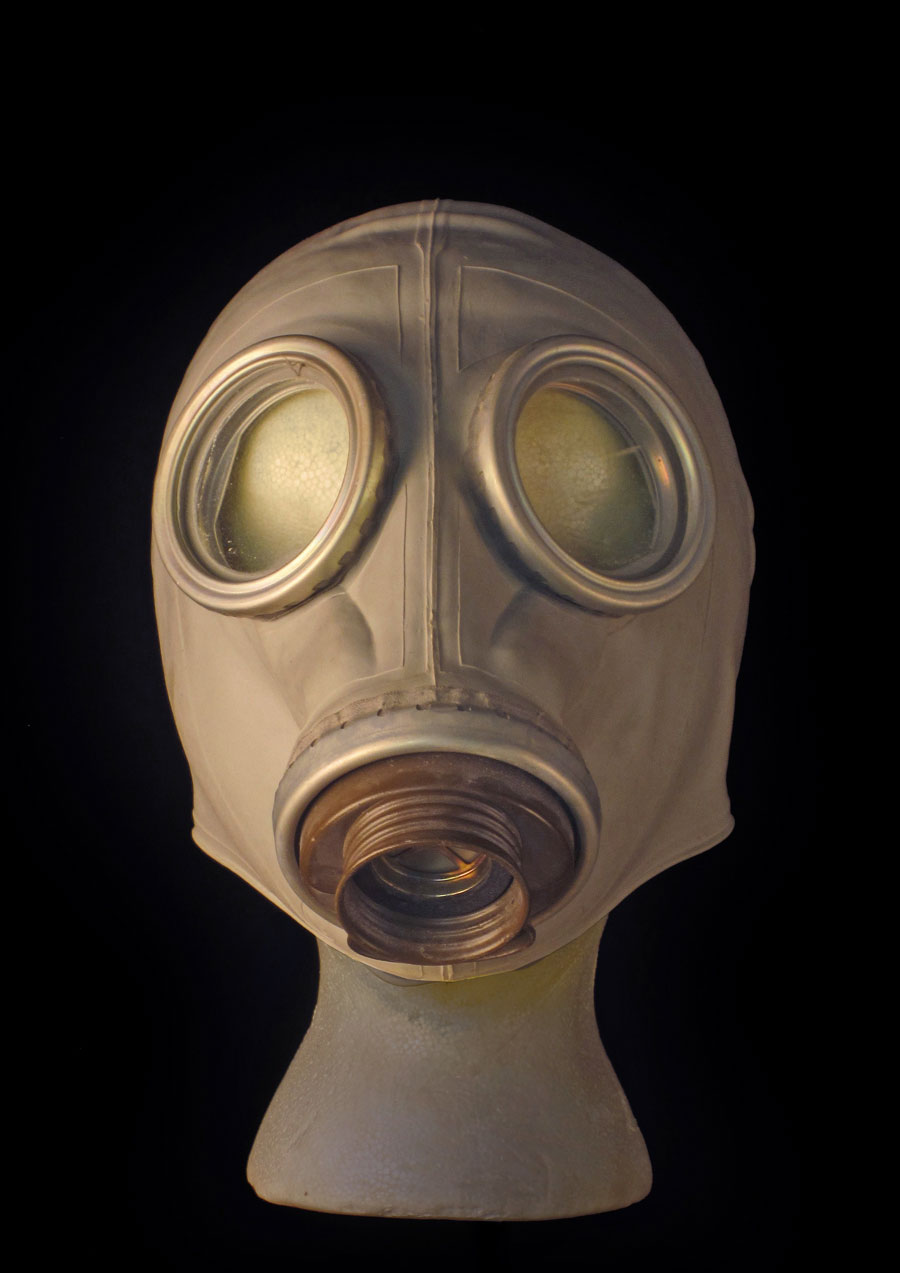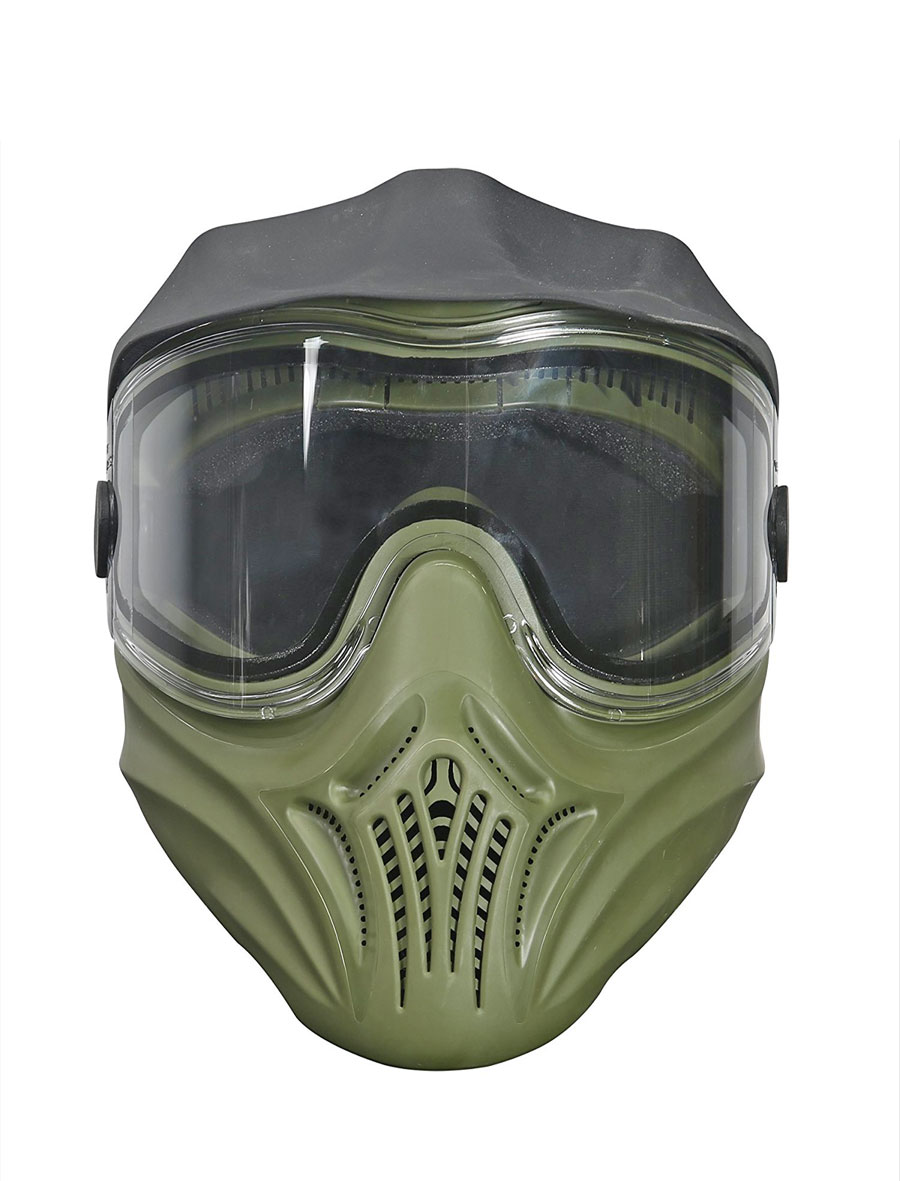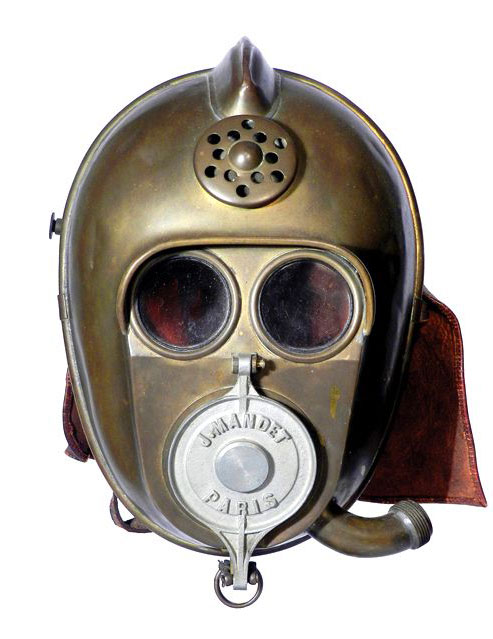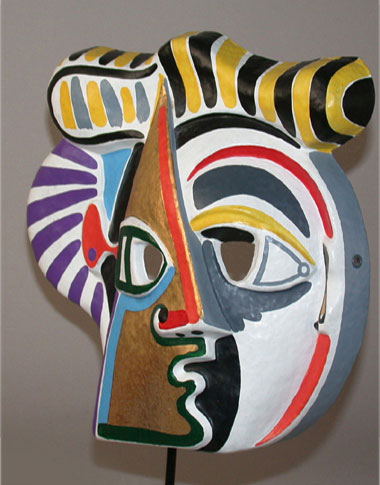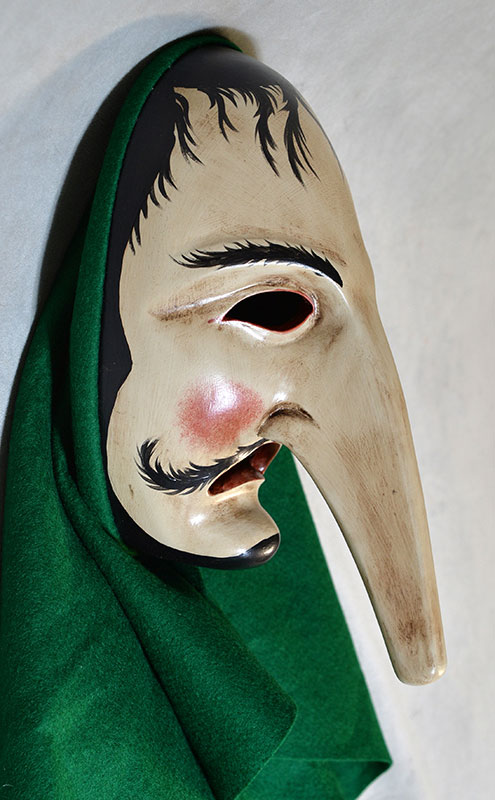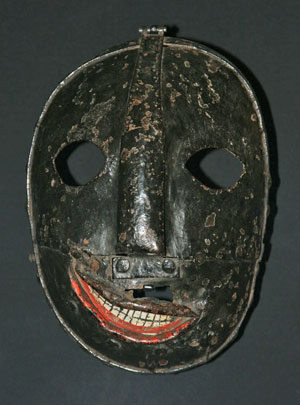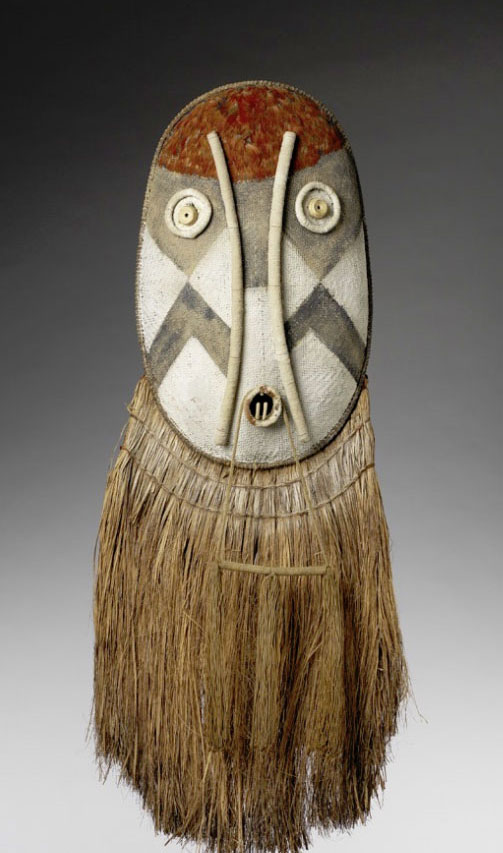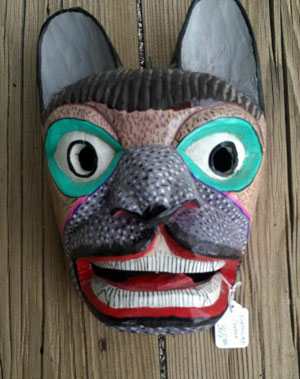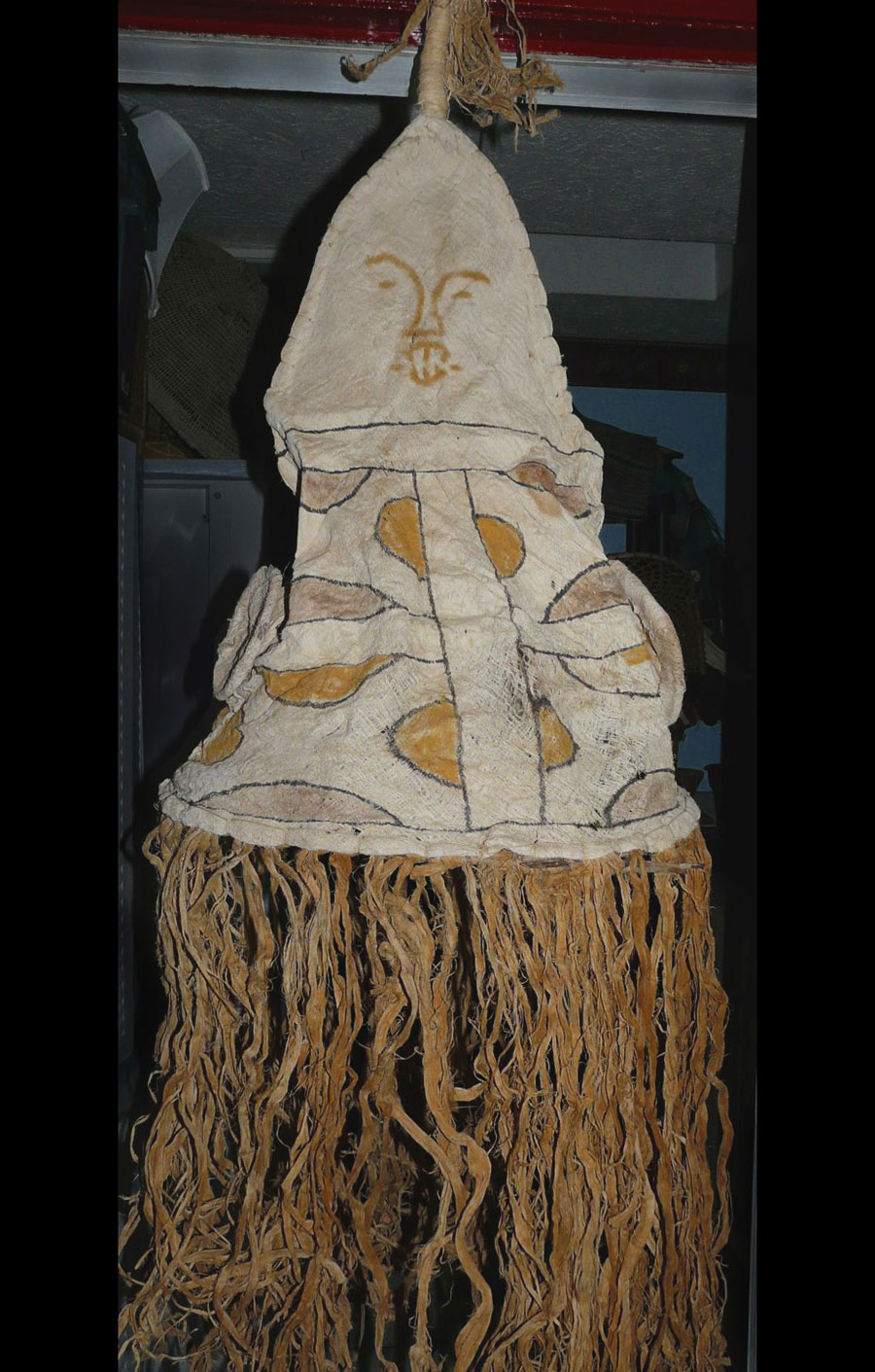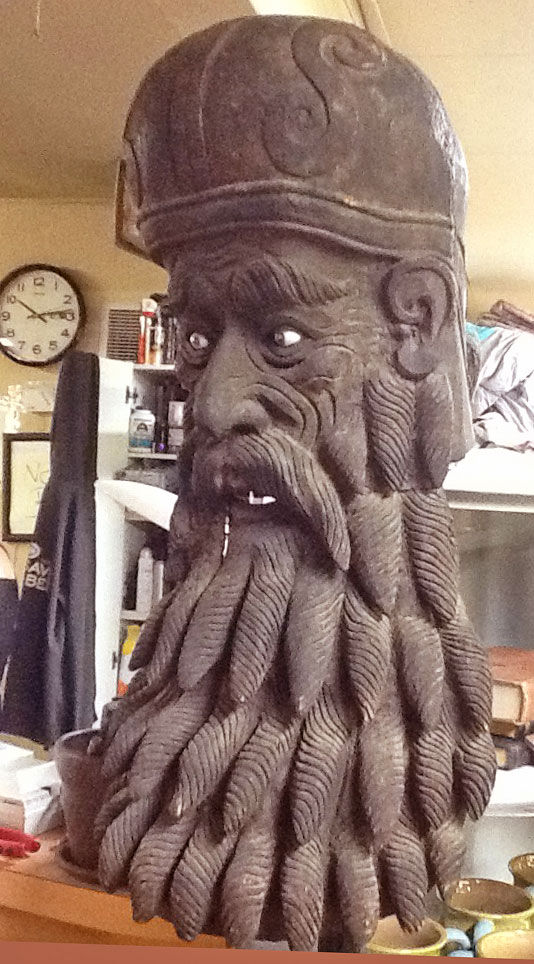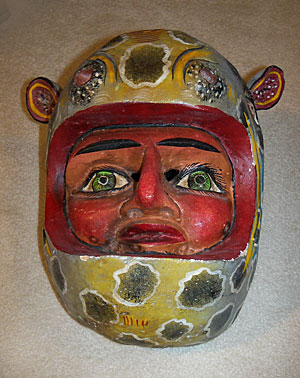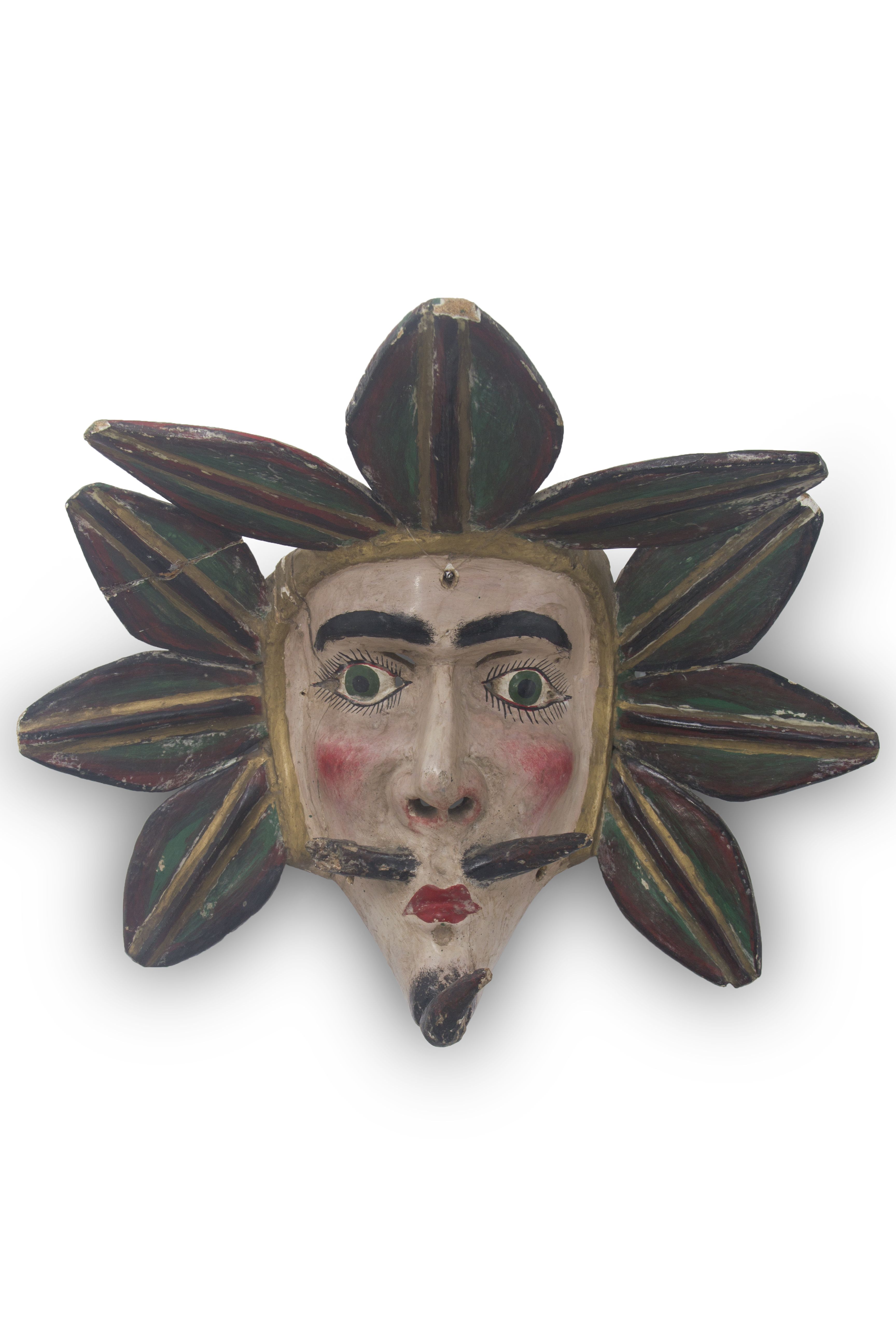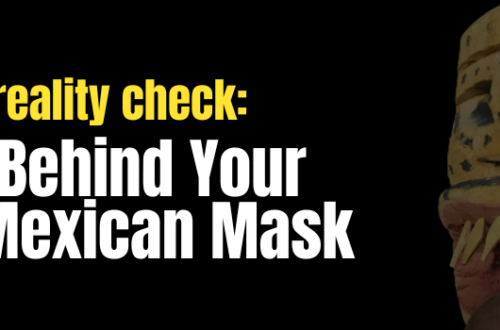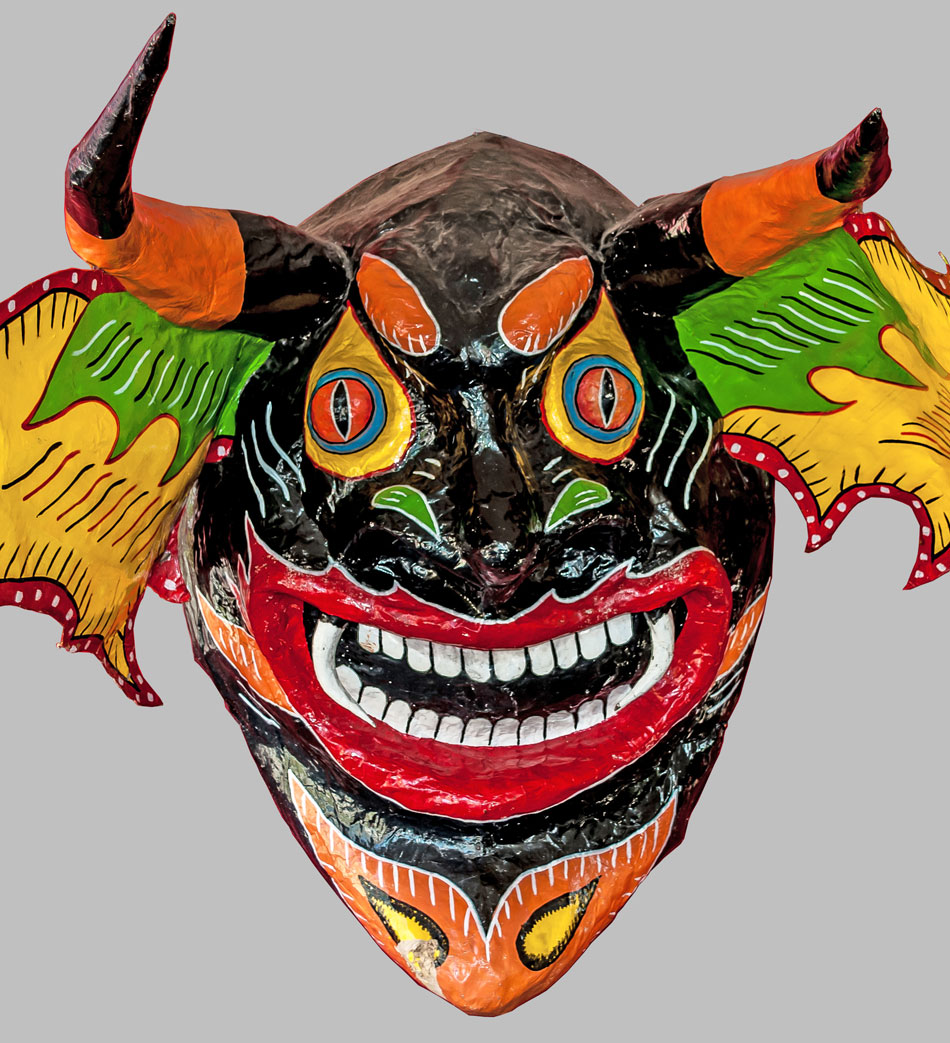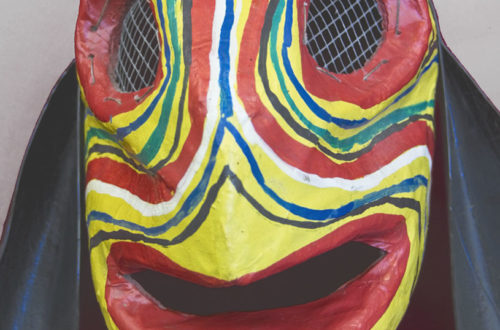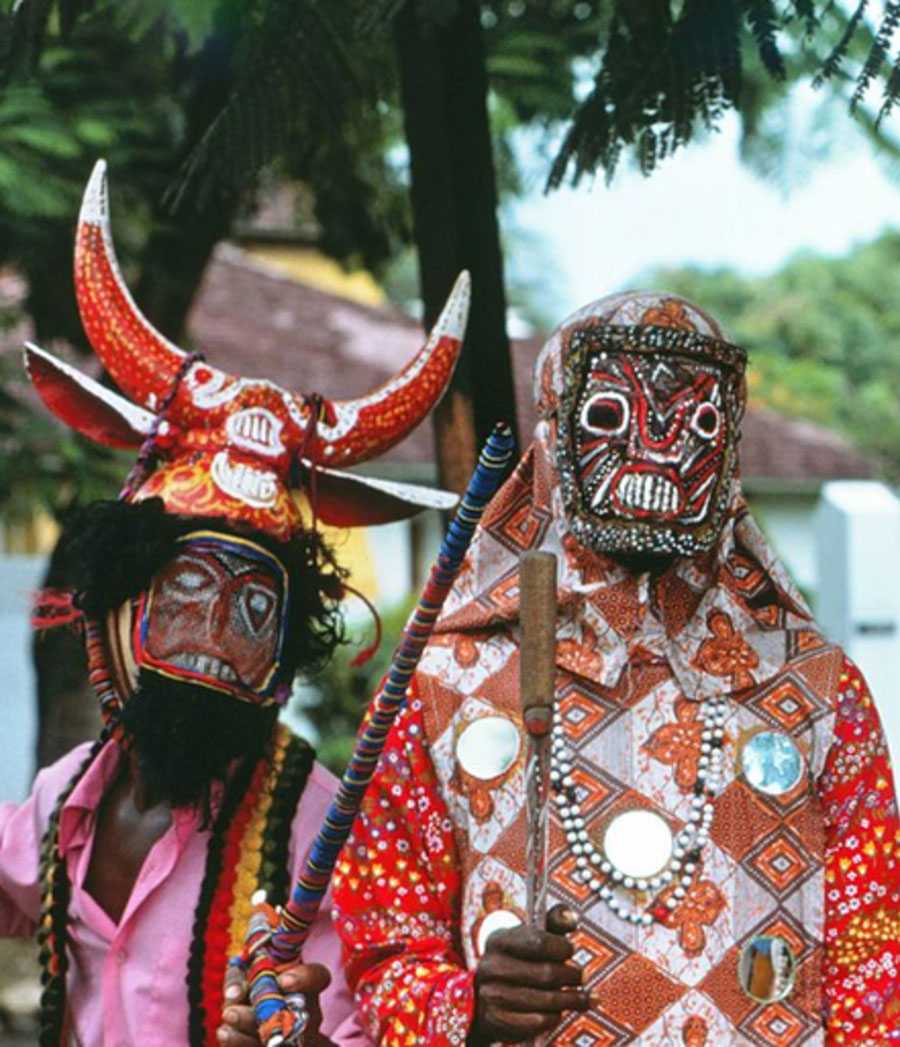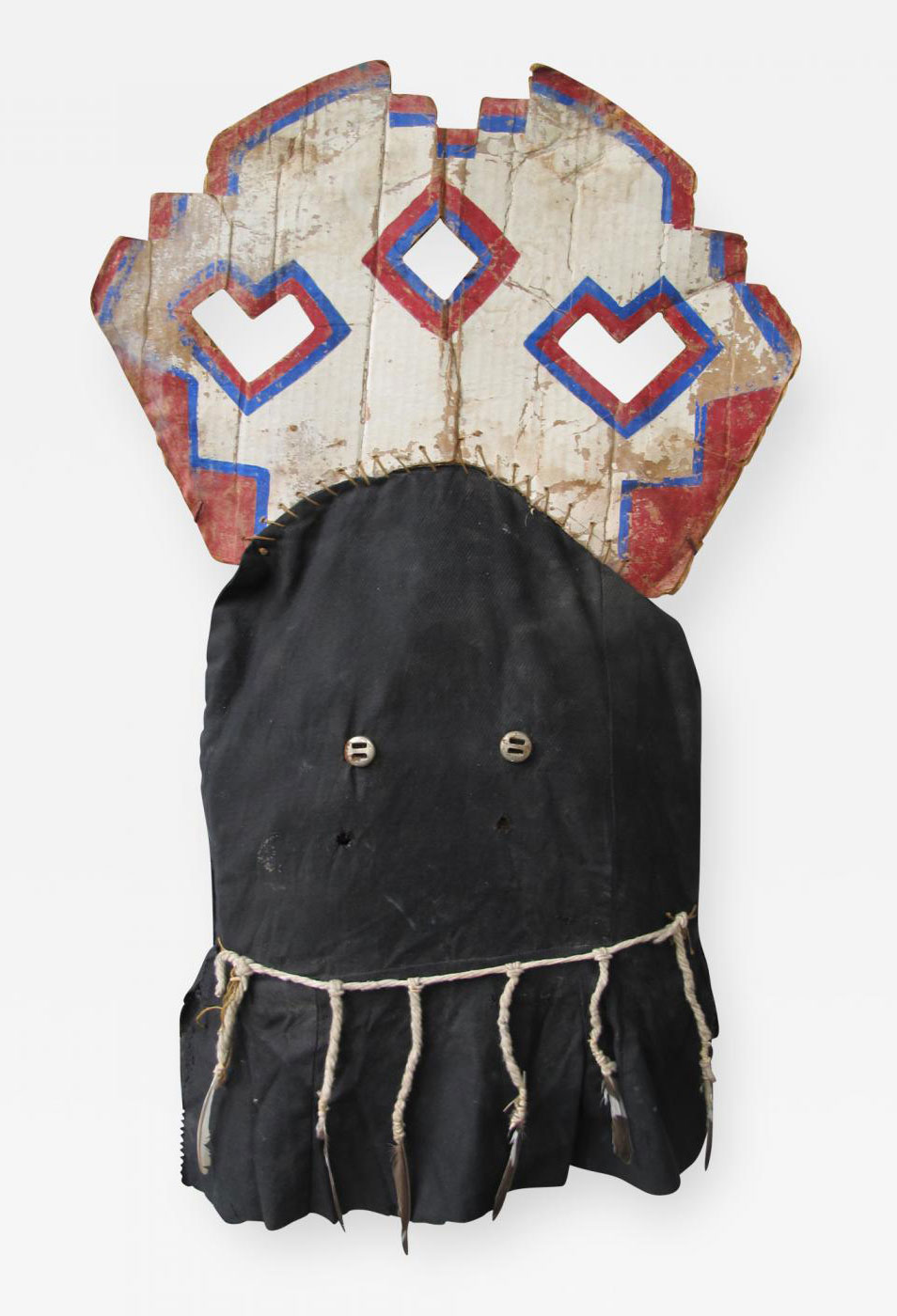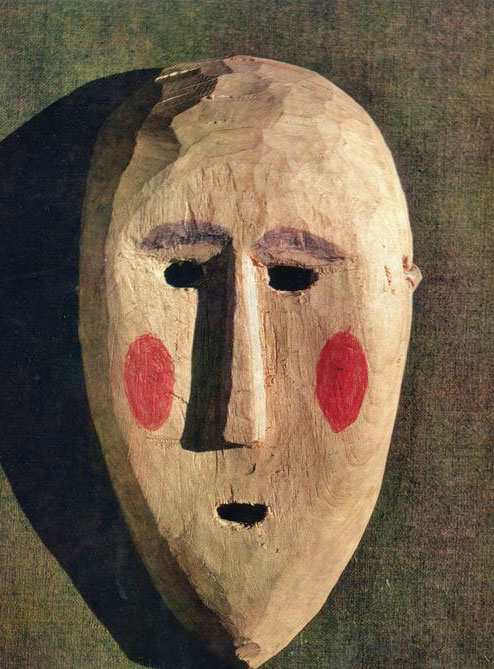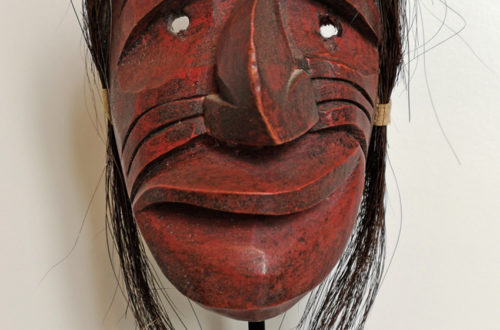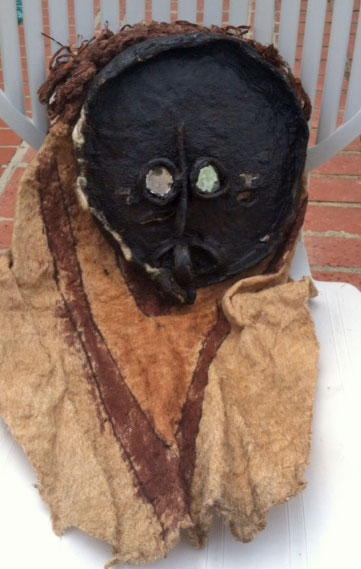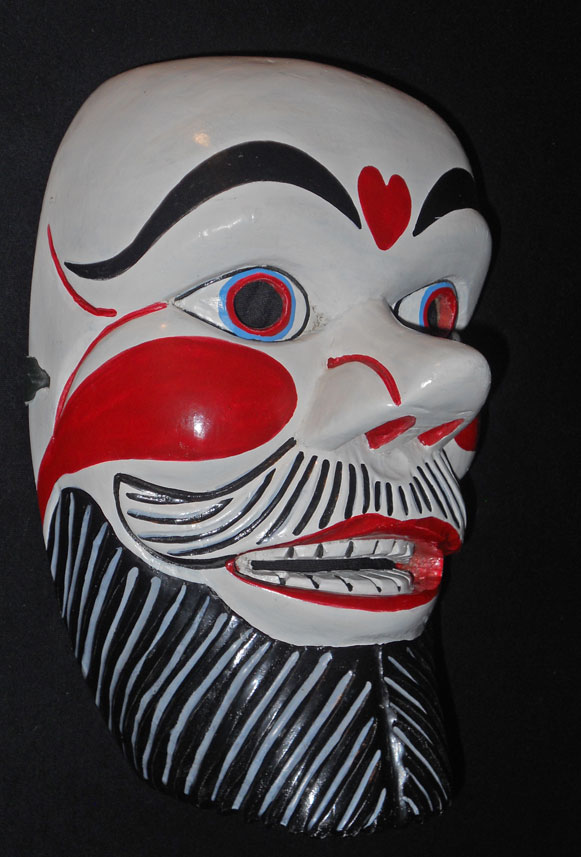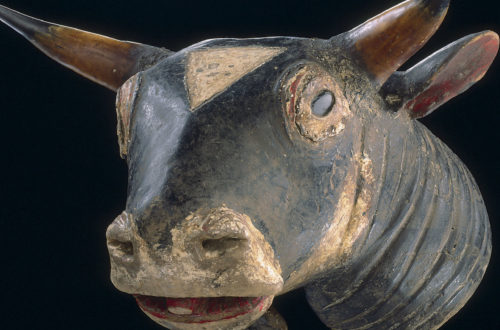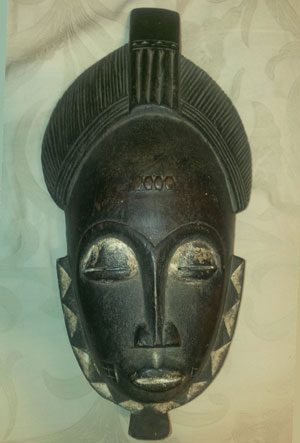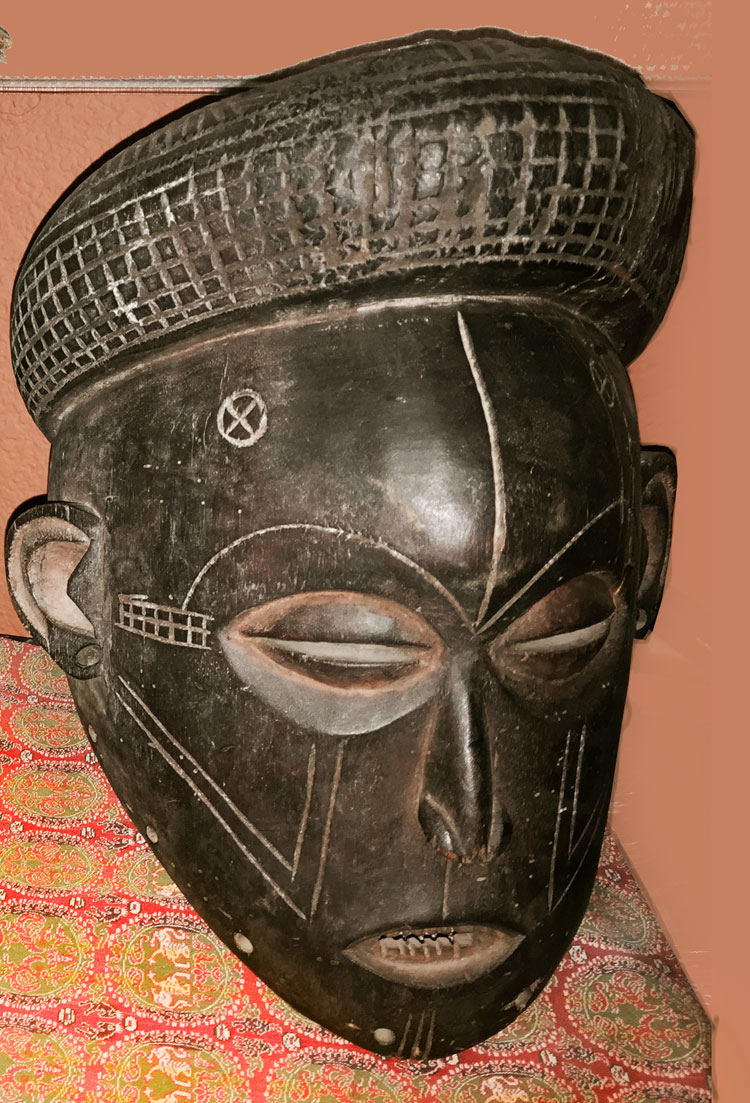The use of masks in Japan started from 10,000 BCE. They are used in plays and rituals, and for Noh theater. Today there are a wide range of characters, ranging from very realistic to extreme exaggerations. This one is called Hyottoko. He can be used for comic interludes in Noh plays. The inexpensive papier mache version shown here can also be used by street performers and the general public. In the USA it can show up for Halloween. Hyottoko, is probably the strangest-looking character of Japanese masquerade. Of course, he is very funny looking and very strange. But I think he would be disturbing enough to strike fear in somebody…
-
-
Complex African traditional art
The character represented in this mask, Banda (also called Kumbaruba by some Baga groups), is a complex composite of human and animal forms. The long horizontal headdress is composed of the face of a human being and the jaw of a crocodile, whose angular teeth are visible along the side of the mask. The human face is characterized by Baga scarification marks as well as a woman’s elaborately braided coiffure. The top of the headdress features the horns of an antelope, the body of a serpent, and the tail of a chameleon. Banda headdresses are quite large; this example measures just over four feet in length. Yet despite their unwieldy…
-
Collectible protective mask
After the last post I want to talk more about protective masks. They are an interesting category of mask collecting. Unlike most collectable masks, they have nothing to do with ceremony or having fun. They are meant to keep the wearer from injury. But they also may have a secondary purpose of intimidating opponents. Here are some examples. You can see more protective masks by going to that category. None of them fail to impress the viewer Gas masks are often used by the military to protect soldiers from poisonous gas that the enemy might use against them. This one, like many others, would also be a little scary for…
-
Masks we don’t see often
Q: I’m trying to find out who made a particular mask. It was a cubist mask featured in Eyes Wide Shut, and I recently found a nearly identical mask linked from your site on Pinterest (though the link on your site is now dead). The image of the mask from Eyes Wide Shut is attached below. David, 1438 A: This mask can be found on page 107 of Masks of the World by Ibold and Yohn. It was purchased from a costume shop in France or Italy about 20 years ago. It is 10 inches high and made of very strong papier mache so it can be worn many times.…
-
Is this a Brazilian mask?
Q: I wondered if you might be able to assist with sourcing a 20th Century Kamayura mask? My client was hoping to purchase a mask that looks exactly like the attached which is currently on exhibition in the Montreal Museum. I wondered if you might have any insight as to who might sell these Brazilian masks or if you might know of anyone who would create a custom mask? Any feedback or help is much appreciated! Antonia, 1437 A: I know about the Kamayura Indians who live around the Xingu River in the Amazon region of Brazil. The mask shown here could be from them, but I haven’t seen anything…
-
What kind of mask is this?
Q: How much is an appraisal? I have a very large carving of what I believe is an antique Mexican Conquistador with blue glass eyes. I have spent over 5 hours online and haven’t found anything like it. So, time to turn to the experts. Thank you. Laurie, 1436 A: I asked her to send me some pictures. She did. The first bearded mask is the one she wants to buy. She also sent pics of other masks in the same collection. That is the second photo which shows 11 antiqued decoratives probably from Guerrero. The mask she wanted looked more like a fake Barbone (bearded guy} or possibly an…
-
Where does this mask come from?
It comes from the Yare people of Northern Venezuela, close to the Caribbean sea. They were brought here as slaves and are of African descent, as are almost all Caribbeans. You can see this African influence in their music, dance, costumes and masks. Most Yare masks are made of papier mache and lots of colorful paint. This one is a typical parade mask from the Devils of Yare. In this folkloric festival, devotion is given to the patron saint Saint Francis of Paola, to the Blessed Sacrament and to Jesus Christ. The celebration starts Wednesday with a wake where fulías (a native music style) are played, décimas (native form of…
-
Native American Apache Gaan Dancer Mask
This Apache Gaan dance mask consists of a black cloth head cover with small eye openings and metal outer ‘eyes’. The top tablita part of the dance mask is inventively made of corrugated cardboard with paint. On the lower portion is circular cotton cord with drops holding small feathers. This mask has definitely been danced. It is about 25 inches high. The Apache people are generally thought to be a single tribe of Native American’s, but in actuality, the Apaches are an assimilation of various Apachean tribes that are thought to be a subgroup of Athabaskans, migrating south from Canada and Alaskan regions. While most of these bands of Apache…
-
This is a South American mask
Q: This mask was advertised on eBay as Mexican, but at 7 1/2″ wide & 11 1/2″ long, it is larger than most Mexican masks and made of a heavier wood. Maybe it’s a Latin American carnival mask or even an African mask. It fits the face perfectly but has no holes on the side to secure it to the face. I paid about $160. The paint looks vintage. Alicia, 1433 A: Your mask is from Ecuador. The hard wood and large, round eye holes make them easy to identify. It is made by the Quechua speaking Indians who live in the northern most parts of the Andes. This one…
-
What is the value of a mask?
Q: I am inquiring on behalf of the owner of an art gallery in South Africa who has this mask in their collection. It was acquired from an informal trader. Not sure of price, but not more than a few hundred. Any info welcome. I only have one photo. Leigh, 1432 A: This looks like an old wooden mask from the Salampasu people who live in south-central Democratic Republic of Congo. Similar masks are often covered with small sections of sheet metal. This could be an old, used mask of considerable value, but without front, side and rear views at higher resolution, I can’t tell. I have seen many of…
